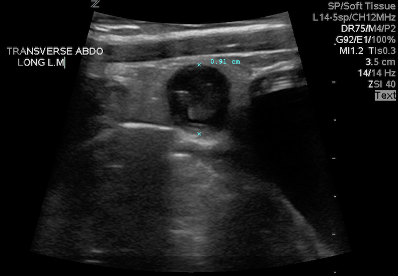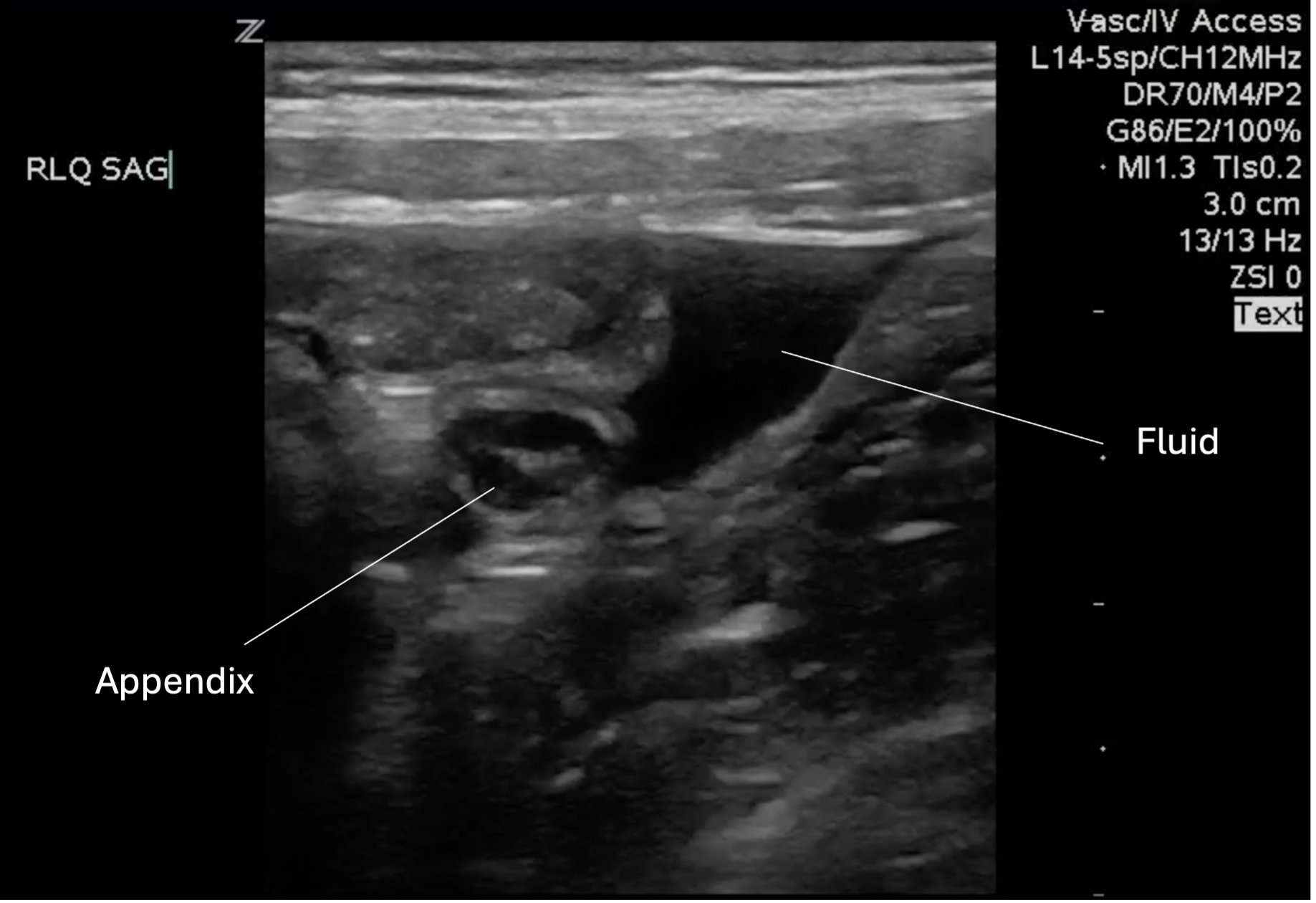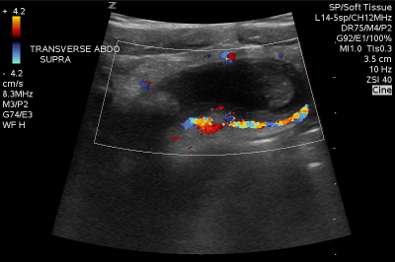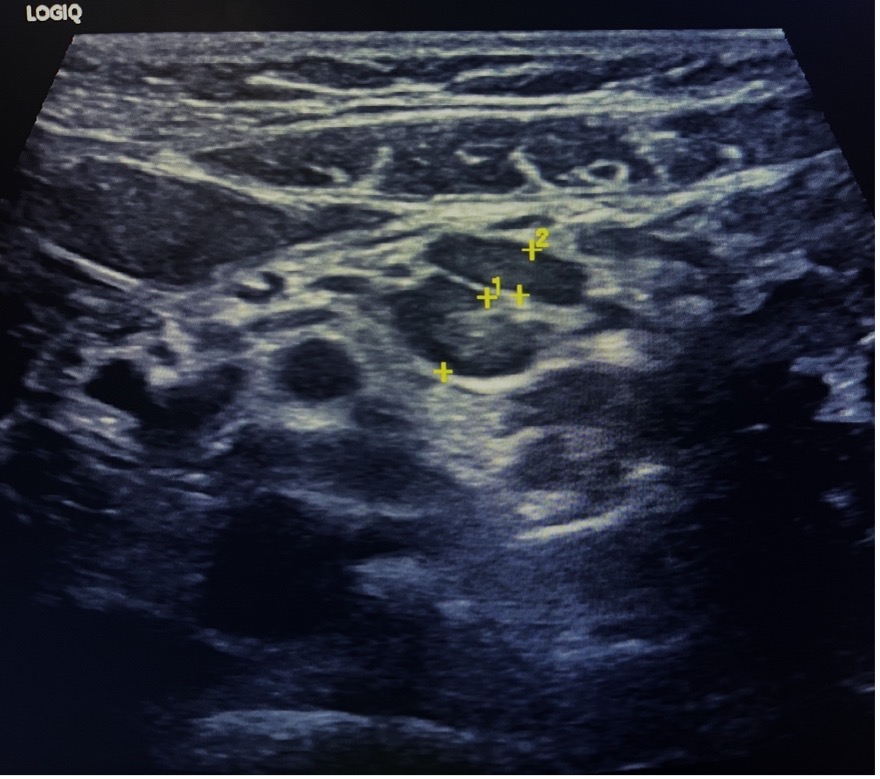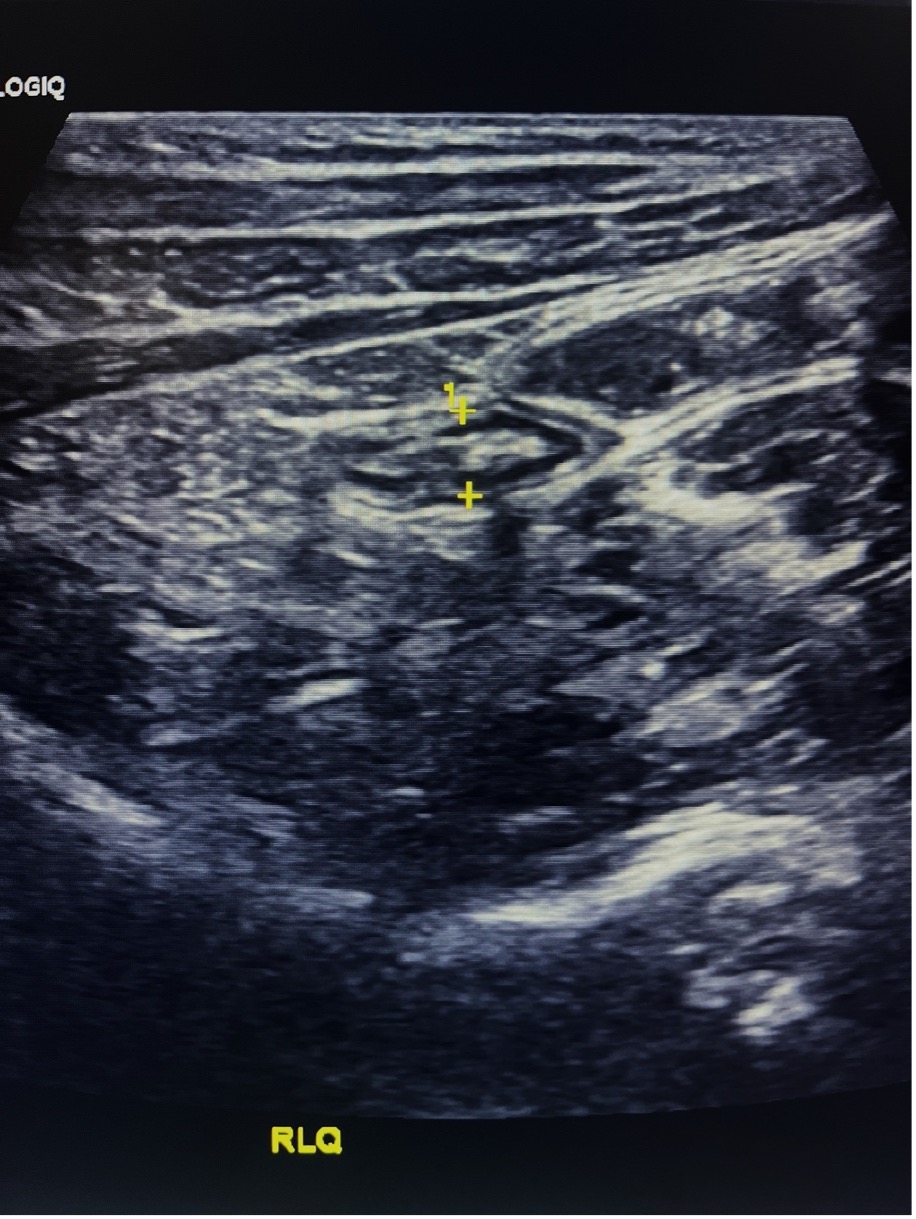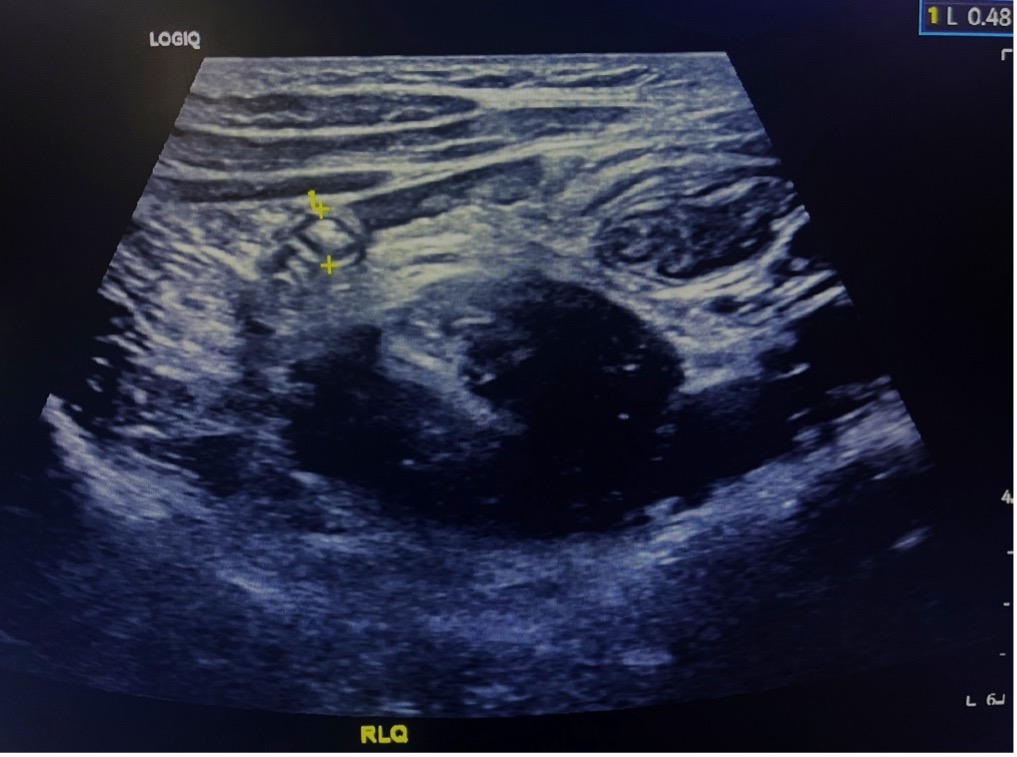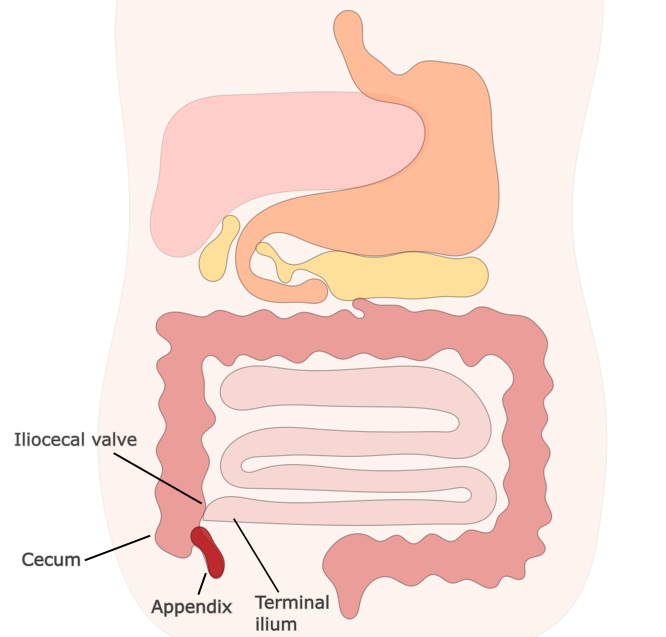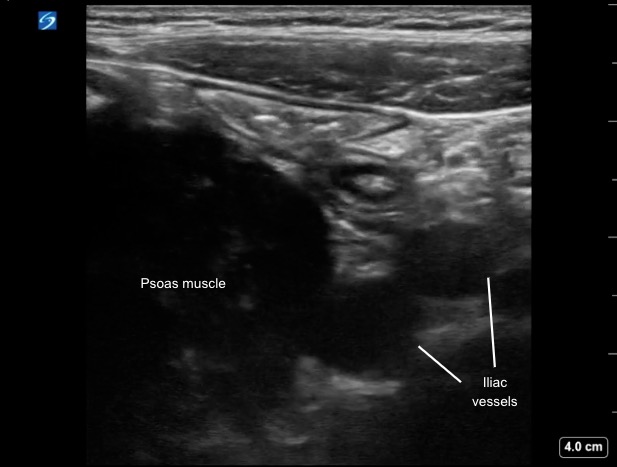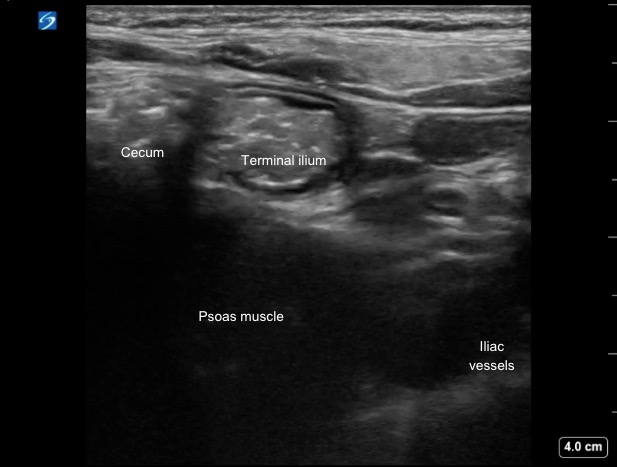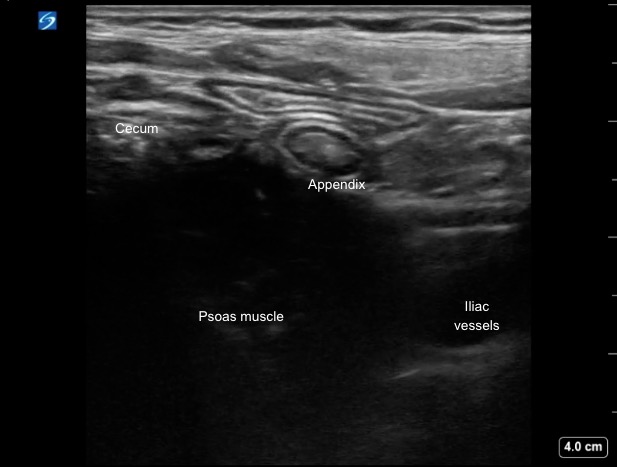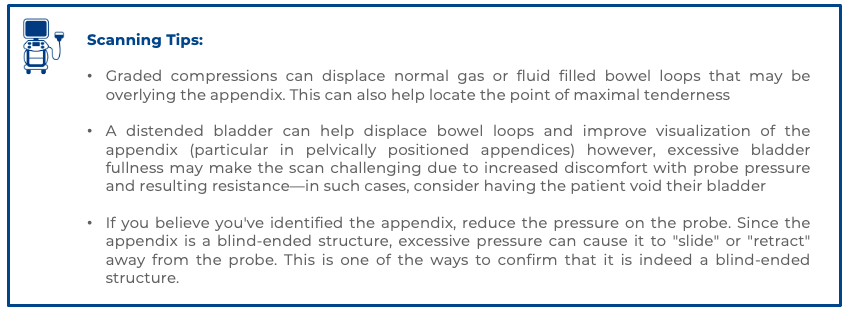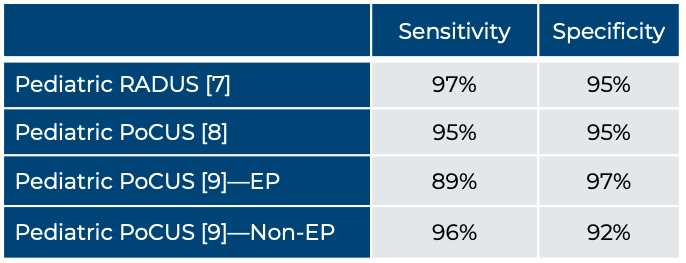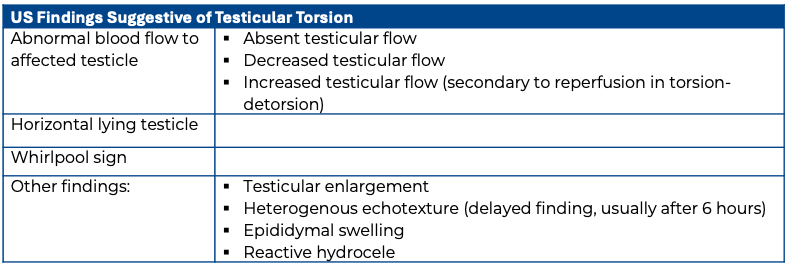Pitfalls
The sensitivity for PoCUS in diagnosing appendicitis in pediatrics ranges from 89-96% [8,9], depending on operator experience, age, patient body habitus, and appendix position. The most significant pitfall is that the normal appendix is far more difficult to identify than the abnormal appendix, leading to a higher rate of nondiagnostic studies. Additionally, retrocecal or pelvic positioning (Figure 15), perforation, overlying bowel gas (figure 16), and increased body habitus can obscure visualization, making diagnosis more challenging.
A common pitfall is mistaking normal small bowel for the appendix; to avoid this, confirm that the structure is blind-ended and check for peristalsis (as active movement suggests bowel rather than the appendix) and assess size and compressibility (via graded compressions), as small bowel is typically larger in diameter and more compressible than the appendix.
Other limitations include patient discomfort and pain during the examination. This can make the procedure more challenging, particularly in children with more severe symptoms, as they may struggle to remain still or tolerate the pressure applied during the examination. To optimize imaging, consider using analgesia, ensuring parental presence, and utilizing distraction techniques to help the child remain still and tolerate the pressure applied during the examination.
Another limitation to consider is the visualization of the entire appendix. While ideally the entire appendix from the cecal junction to the tip should be visualized, this can be challenging and is not always possible in practice.
Proper image acquisition and review are essential to ensure accurate identification of the appendix, with careful correlation to clinical findings.
Figure 17: Retrocecal position of the appendix. The cecum is seen to screen left, and the terminal ileum, which looks like a cut tomato, is to screen right. Video courtesy of Dave Kirschner, used with permission.
Figure 18: Cross-section of the Appendix in the RLQ intermittently visible, obscured at times by overlying bowel gas. Video courtesy of Dave Kirschner, used with permission.


